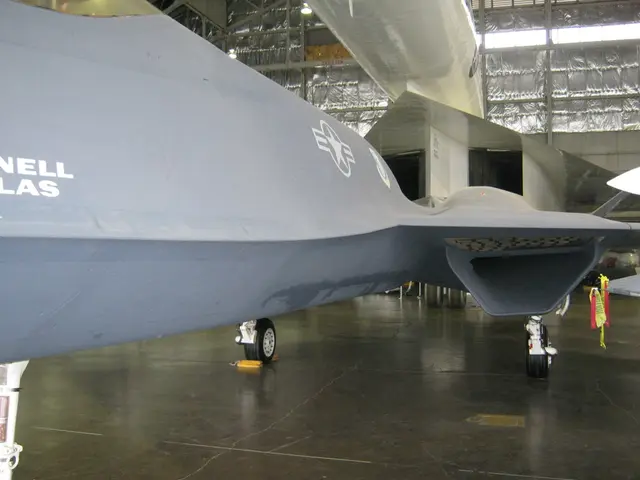Meyer Shipyard has potential to construct four to five warships annually.
German shipyard Meyer Werft, renowned for its cruise ship constructions, is contemplating a shift towards the defense sector, seeking potential opportunities and challenges. This move, if executed, could see the shipyard producing four to five warships annually, a feat unmatched in Germany.
Currently specialized in building luxurious cruise ships, including three for Disney, Meyer Werft is in conversation with a strategic consultant to explore its possible role in the defense sector, commonly referred to as 'gray goods'. According to CEO Ralf Schmitz, the potential lies in building frigates, but the company lacks expertise in key defense technologies such as radar and weapons systems.
An advantage of transitioning to defense would be the secure shipbuilding halls, which could evade detection by enemy drones and satellites. However, forming partnerships or acquiring needed competencies would not be straightforward, given the competitive and tight market with established providers.
The German government and the state of Lower Saxony had saved Meyer Werft from bankruptcy at the end of 2020, due to the limited new orders during the Covid-19 pandemic. The shift towards defense is seen as a strategy to secure the company's future and diversify its market portfolio.
The European arms industry is booming, with the EU nations aiming to invest €800 billion in defense over the next decade. The increased spending is a response to the Russian attack on Ukraine. Arms group Rheinmetall, previously hit by low sales due to defense budget cuts, is now targeting record sales as part of the massive rearmament program.
Many arms companies are also facing a worker shortage due to the industry's growth. Some are looking towards the struggling automotive industry for talent, while others are setting up their own vocational schools to address the skill gap.
Meyer Werft's decision to enter the defense sector presents a mix of challenges and opportunities. On one hand, the company will need to adapt to new engineering standards, bridge expertise gaps, and navigate complex and competitive markets. On the other hand, the growing demand for advanced naval vessels, coupled with Meyer Werft’s existing capabilities in propulsion, automation, and digitalization, offers substantial opportunities for diversification and long-term growth.
In summary, Meyer Werft's foray into defense shipbuilding represents a strategic move aimed at securing the company's future, diversifying its market portfolio, and capitalizing on the growing demand for advanced naval vessels. The challenges lie in adapting to new engineering standards, bridging expertise gaps, and navigating complex and competitive markets. However, the opportunities are substantial, with the potential for long-term growth and market diversification.
In light of the growing demand for advanced naval vessels and the €800 billion defense investment by EU nations over the next decade, Meyer Werft's decision to enter the defense sector presents an opportunity for long-term growth and market diversification. To capitalize on this, they may need to partake in vocational training to bridge expertise gaps in defense technologies such as radar and weapons systems, and establish partnerships within the industry. This shift could also potentially benefit from financial support, given the ongoing European arms industry boom.








